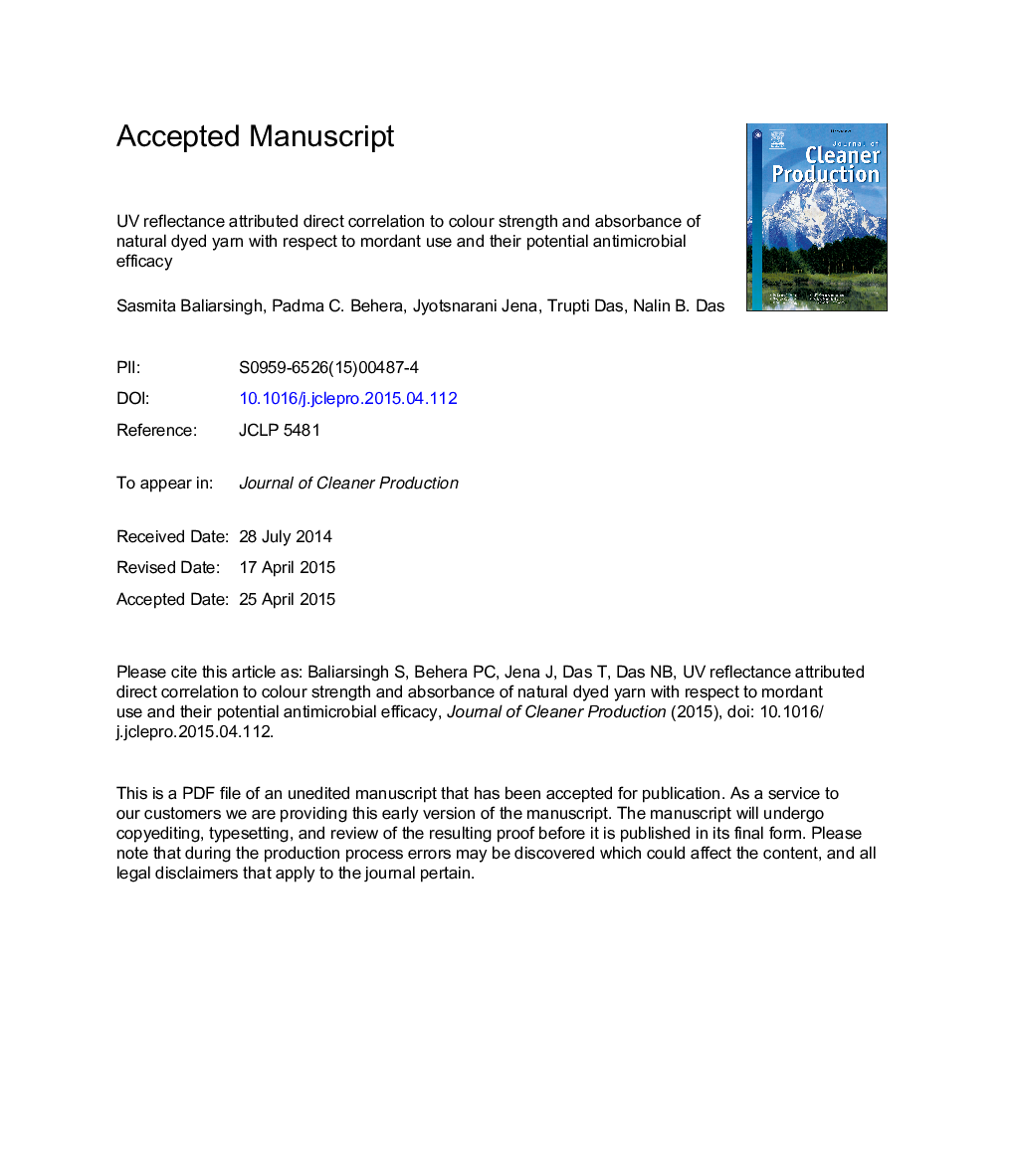| Article ID | Journal | Published Year | Pages | File Type |
|---|---|---|---|---|
| 8103889 | Journal of Cleaner Production | 2015 | 32 Pages |
Abstract
In this study, an attempt has made to investigate the impact of UV reflectance of un-dyed and dyed cotton yarn on the quantity of natural dyes absorbed by the fibre and observed its colour intensity. The study also provides evidence of the relationship between the UV reflectance and the colour strength of the dyed cotton with respect to mordant. The absorption of dyes on cotton yarns ranged from 5.06 to 34.09% in 5% dye solution of different plant extracts. Experimental data revealed that the higher colour intensity (K/S) corresponded to lower UV-reflectance and higher dye absorption of the dyed yarns. It was demonstrated that the dyed cotton yarns displayed excellent antimicrobial activity against bacterial strain Streptococous pyogenes (reduction rate: 52-61%) and the fungal strain Aspergillus niger (reduction rate: 35-63%) for developing protective clothing. The current findings clearly demonstrate that the extraction of natural colourants from waste leaves and superficial barks of the plants could be a sustainable technology for waste utilization of bio-resources by the small-scale segments as well as the rural weaver's societies for their socio-economic growth.
Keywords
Related Topics
Physical Sciences and Engineering
Energy
Renewable Energy, Sustainability and the Environment
Authors
Sasmita Baliarsingh, Padma C. Behera, Jyotsnarani Jena, Trupti Das, Nalin B. Das,
